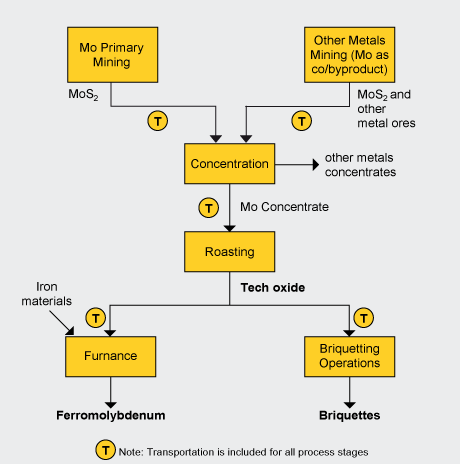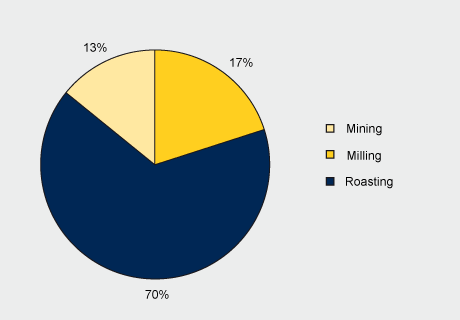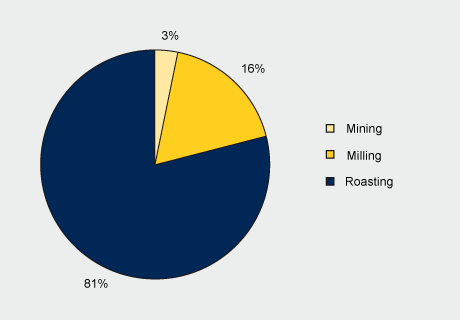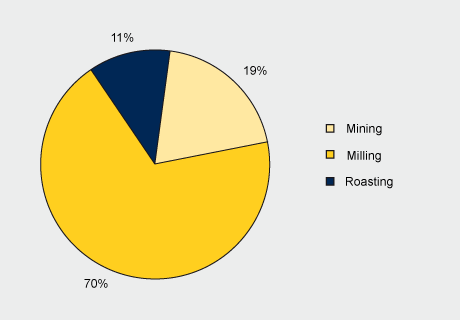Aggregation of primary production data from the questionnaires included rigorous data checks, application of methodological rules that adhered to the ISO 14040 set of standards, calculation of weighted averages of facility data, and reporting of statistical information for each LCI flow monitored. The LCI models were built in the SimaPro LCA software.
The results, available upon request, are presented in terms of one kilogram of molybdenum in each product and are fully aggregated in terms of their total cradle-to-gate values. By themselves, the results have little meaning. However, when the LCI results are used in an application (e.g., as a raw material to stainless steel), the application and performance of molybdenum becomes meaningful and interpretable.
Please note: the results of these LCI studies are not intended for use in comparing one molybdenum product to another. In fact, one should not compare any material on a per kg or pound basis unless the materials being compared have the exact same performance characteristics and can be replaced on a 1-1 ratio (this is rarely the case). Comparisons are meaningless – and inappropriate – unless proper functionality and performance characteristics are included in the systems compared, such as quantity and performance in an end product and the useful lifetime of that end product. Alternatives compared also should be reasonable and realistic.
Below are some results that look at the contribution of the three main unit process stages for tech oxide: mining, milling/concentration, and roasting. Most of the carbon dioxide and fuel energy in the cradle-to-gate tech oxide system come from the milling/concentration operations. Most of the sulfur dioxide comes from roasting, a pyrometallurgical process that converts the molybdenite concentrate into tech oxide.




